
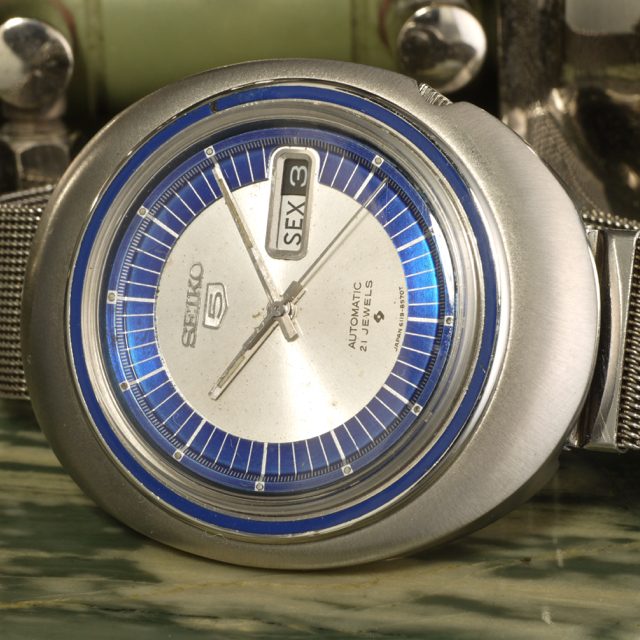
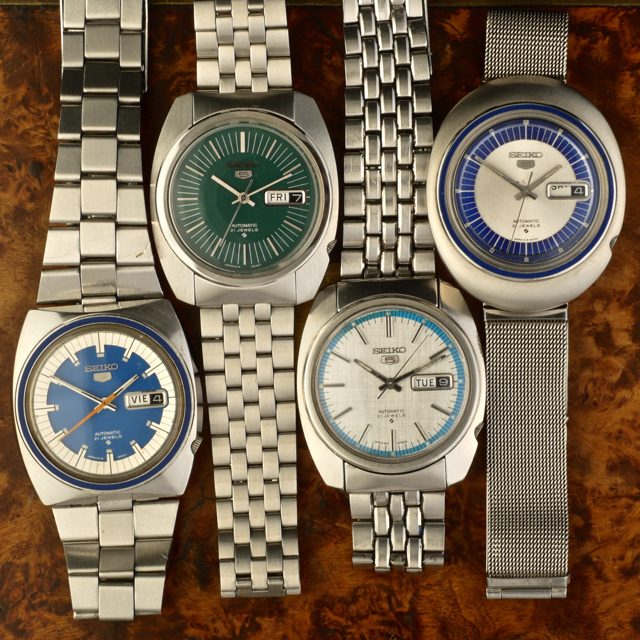
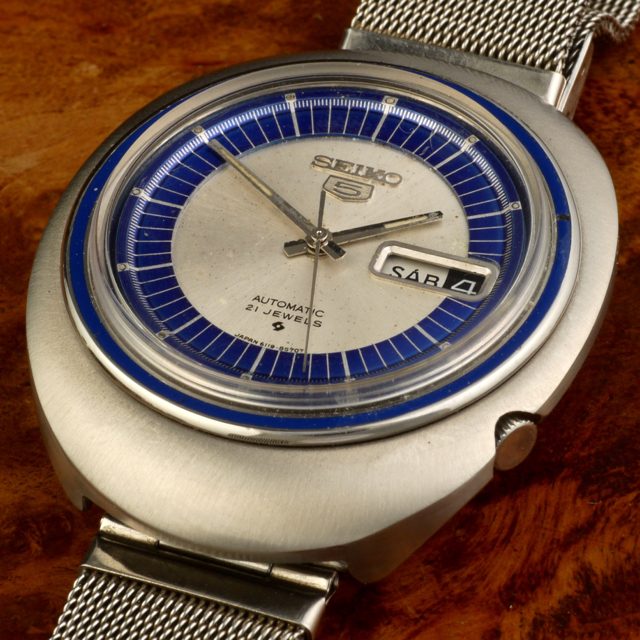
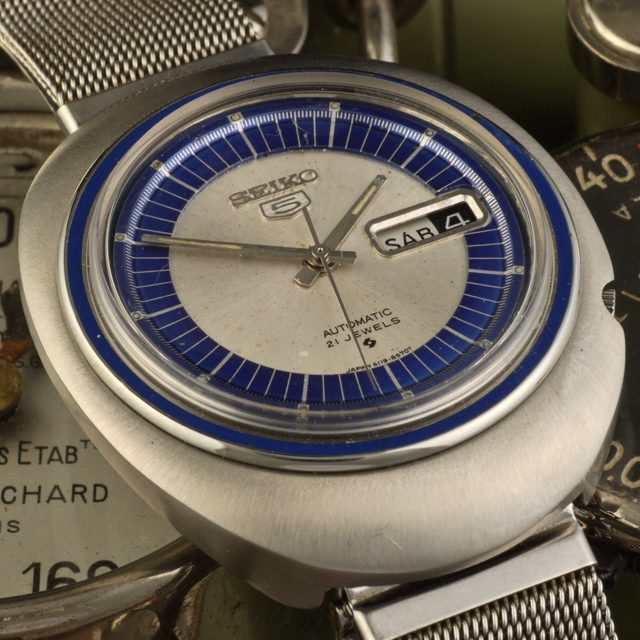
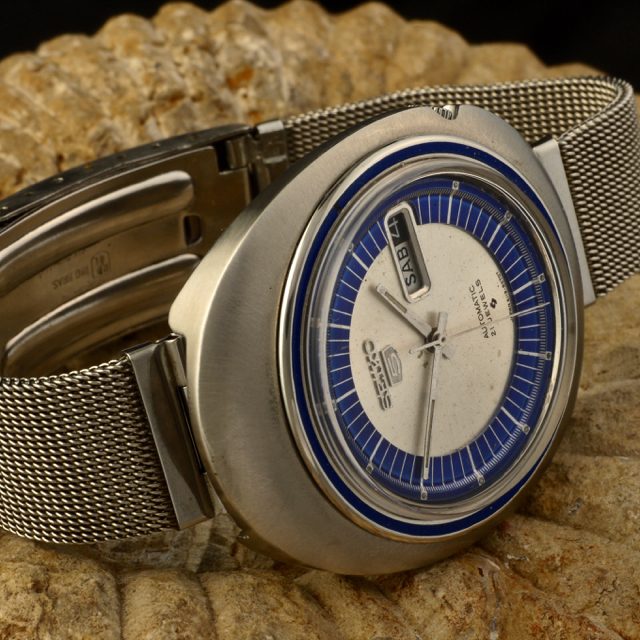
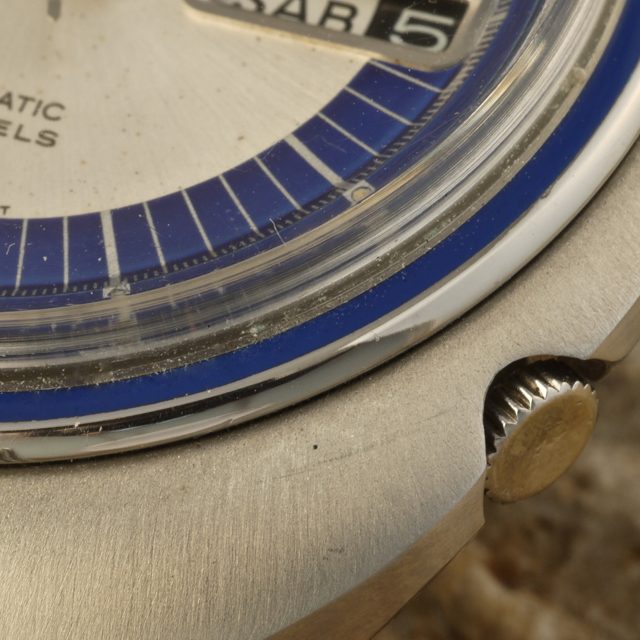
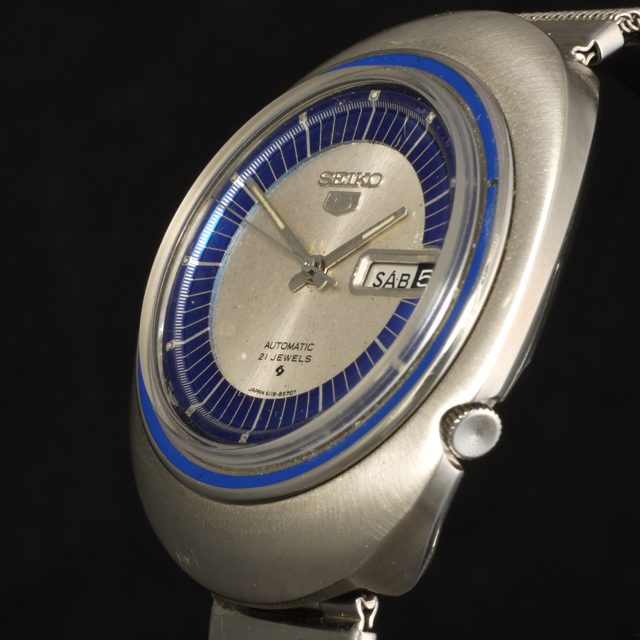
Seiko 5
Nobel Prize for Literature: Pablo Neruda (Chile)1971 Seiko 6119-8480 automatic 5 series with day-date, blue and silver dial, blue enamel bezel. 39 x 40.3mm. case.
Seiko 6119-8480 automatic 5. The 5 reflects five key features of the watch: Automatic winding. Day and date display in a single window. Water resistant. Recessed crown at the 4 o’clock position and durable case and bracelet.
The company established in 1881 in Tokyo, Japan. Eleven years later, in 1892, Seiko began to produce clocks under the name Seikosha.
The first watches produced under the Seiko brand appeared in 1924.
Seiko launches the Bell-Matic in 1966, World’s first automatic alarm watch with a central rotor.
1969 was an important year for Seiko, the company introduced the Seiko caliber 6139 considered for many collectors the real first automatic Chronograph and the Astron, the world’s first production quartz watch; When it was first in the market, it cost the same as a medium-sized car.
Three companies compete for the title of being the first company to have an automatic Chronographs, Zenith, Heuer, and of couse Seiko.
Zenith announced the El Primero in January, the group behind the Heuer Caliber 11 start selling it to the global market first in August. While in Japan Seiko, quietly producing their automatic chronograph, and releasing it to the Japanese market as early as May 69.
Finally, in 1985, Orient and Seiko established a joint factory.
Seiko is perhaps famous for its wristwatches, all of which were at one-time production, entirely in-house. This includes not only major items such as micro gears, motors, hands, crystal oscillators, batteries, sensors, LCDs, but also minor items such as the oils used in lubricating the watches and the luminous compounds used on the hands and the dials.
Seiko produces both quartz and mechanical watches of varying prices.
The brand Alba sold the slightest expansive, which is around US$45. The most expensive, Credor Juri GBBX998, costs US$554.000.
